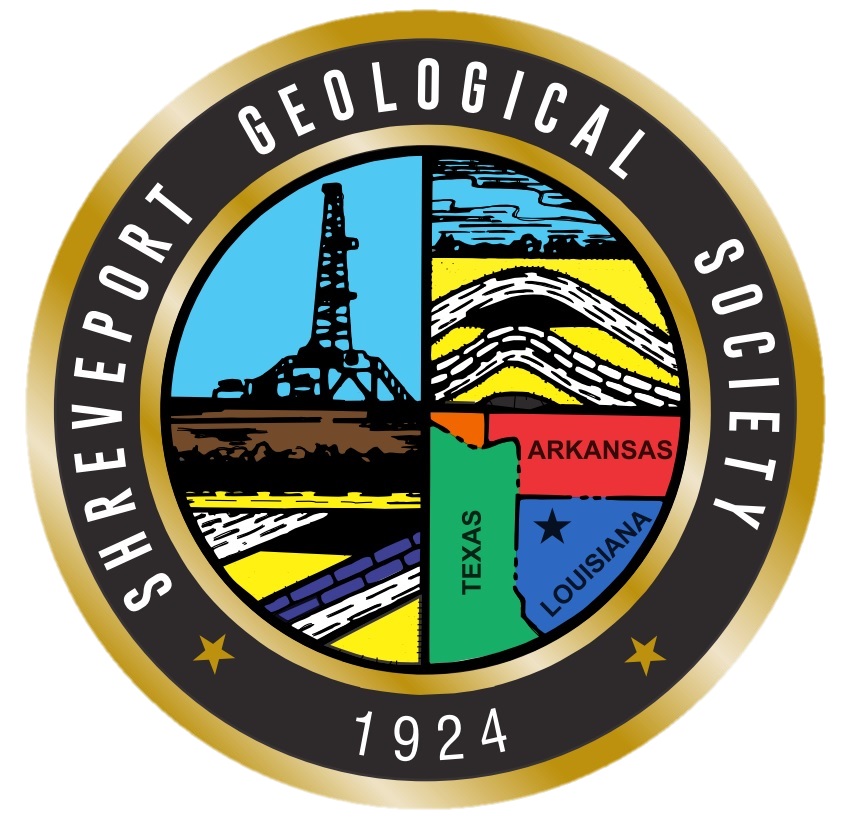Virtual
Where: Zoom
Cost: $10
If you’d like to attend virtually, please pay with a credit card below and use the email address where you would like Zoom login details sent.
In-Person
Where: The Petroleum Club of Shreveport, 15th floor
Cost: $20, Children 10 and under $8
If you’d like a seat, kindly use the form below to make your reservation by the preceding Friday.
We encourage members to invite guests, spouses, and friends to any of our meetings.
Biography
George W. Roth has 46 years of exploration and development experience in oil and gas and precious and base metals both internationally and domestically. George received a BS in Geology in 1974 from Buffalo State University, Buffalo, New York, and did Post Graduate work in Hydrogeology at Wright State University, Ohio, and Post Graduate work in Structural Geology at the University of Texas at Dallas. He began his career in 1975 in the Rockies with Core Laboratories and was the Chief Development Geologist for W. R. Grace and the Chief Geologist, Frontier Division of Hunt Oil Company in Denver. In 1989 George was transferred to Dallas with Hunt Oil and continued exploring in frontier basins from Alaska to the Canadian Maritimes. In 1995 he was assigned to the Indian Ocean Passive Margin Team with Hunt Overseas as Team Leader and evaluated the hydrocarbon potential of 19 basins from South Africa to the East Coast of India. In 2001 he joined Range Resources Corp in Fort Worth and worked on a variety of projects in East Texas, Louisiana, and the Appalachian Basin. Burnett Oil hired George in 2014 to be the V.P. of Exploration for the private family company in Fort Worth, and since 2017 he has been a consulting geologist for Chisholm Energy working in the Permian Basin and continues to evaluate the precious and base metal potential of Alaska through Crooked Creek Exploration LLC. George is an Emeritus member of the AAPG, and a member of the Rocky Mountain Association of Geologists, the Fort Worth Geological Society, SIPES, and the Alaska Miners Association. He is a Registered Professional Geologist in the State of Wyoming.
Abstract
“Exploration for Precious and Base Metals in
Alaska: The Last Frontier”
Alaska’s 67 diverse metallogenic mining regions and districts has an underexplored base and precious mineral-resource potential, and currently hosts several world class deposits with over 50 million ounces of lode gold discovered since 1996 making Alaska a Top Tier mining jurisdiction. Alaska ranks 7th worldwide for mineral potential, “Best Practices Mineral Potential” (Fraser Inst. 2020), and 4th worldwide for investment attractiveness (Fraser Inst. 2020). However, 67% of the known placer districts do not have an associated lode gold deposit; therefore discovery potential of additional large ore deposits is great.
Alaska has 6 lode mines producing gold and base metals, 1 coal mine, more than 200 placer gold workings, and at least 35 active advanced – through early stage, lode exploration projects. The U.S. depends on foreign sources for more than 50% of its supply of 31 of the 35 minerals considered critical to the nation’s economic and national security, including 100% import-reliance for 14 of these. Gold is considered a pathfinder mineral to six of these critical metals which can often be found in association with placer and lode gold deposits in Alaska. The Tintina Gold Belt of central Alaska is 150,000+ sq. km. (2x Permian Basin) it is particularly well endowed with large intrusion related gold systems (IRG) and the critical minerals associated with them. Alaska’s total exploration spending in 2020 was approximately $111 million, 41% of this budget was directed toward mine site exploration, an all-time high.
In 1971 Nixon signed the Alaska Native Claims Settlement Act (ANSCA) into law. The Act established 13 regional and 224 village corporations giving native ownership to lands throughout the state, which today total 38 million acres approximately 12% of Alaska. Unlike the Lower 48 tribes the Alaska Native Corporations have sovereignty over these lands making them a unique exploration partner.







































